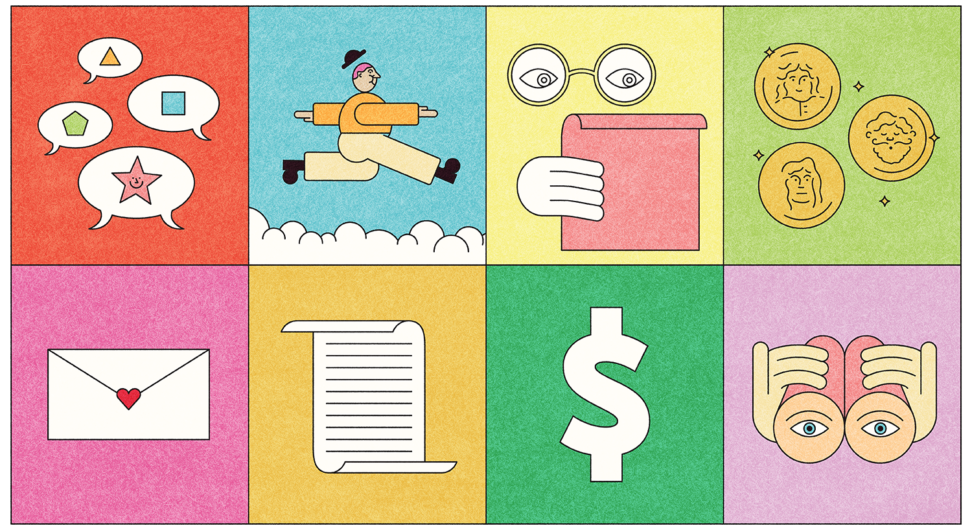Tips For Starting an Illustration Career
One of my favorite things about illustration is that I get to learn SO MUCH every day as a freelancer, which is exciting, fulfilling, and sometimes overwhelming. I like to make lists and collect resources, so I’ve been taking note of all the things I’ve learned as an illustrator and things I wish I had known much sooner.
Part of the fun of freelancing is constantly learning and growing from new clients and situations, but some things would have been helpful to know from the start! So I wanted to share some of those things with you if you are at the beginning of your illustration career. The following bullet points share what I have learned about entering the industry, networking, getting work, navigating your first jobs, pricing, negotiating, contracts, finances, and taxes.
 On making the leap to freelancing full-time:
On making the leap to freelancing full-time:
- You will need some savings in the bank as a cushion, a portfolio, perseverance, and a plan for how you will make money!
- Have at least a few months of savings (probably more) prepared. Even if you are sure the jobs will roll in, there will usually be a delay in getting paid.
- Find a mentor: they can make a huge difference in your career by offering industry advice and honest, productive feedback on your work.
On networking:
- Join illustration Slack channels. You can find these with a quick google search.
- Email your favorite illustrators, designers, and art directors. Tell them you love their work, ask for tips on their techniques, or just say you’d love to connect. Illustrators are incredibly friendly and generous and I’ve learned a lot about their technique by doing this!
- Instagram is a great way to connect with other illustrators, designers, and art directors. If you like someone’s work, comment or DM and let them know, and start building a relationship!
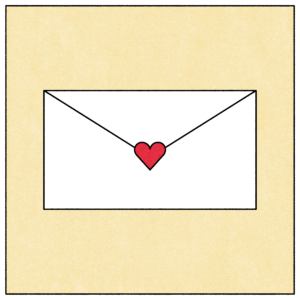 On getting jobs and building a client base:
On getting jobs and building a client base:
- Make a portfolio and showcase at least 20 of your best illustrations. Update with new work and remove work that doesn’t quite show how talented you are.
- Build a spreadsheet of art directors’ names, companies, and email addresses. You will have to spend some time searching for art directors’ names and emails. Email them every 2-4 months, introducing yourself and sharing your portfolio along with a few low-res attachments of new work. Do not send bulk-group emails. Personalize each email at least with the name and company of the art director you are addressing.
 On where to find illustration work:
On where to find illustration work:
- Searching around and following the right accounts on Instagram, LinkedIn, Twitter, Slack channels, call for entry websites, and Google is one creative way to find jobs.
- Try your very very very best to avoid gig websites like Fiverr and Upwork: you can spend hours on these sites competing for low-paying jobs for low-quality clients. They will often want you to create work in a style very different from your own, which can set you back in your creative practice. Focus your energy on getting quality jobs with quality clients who will pay quality rates! This will naturally lead to more great quality jobs.
- Art directors and designers are the people in companies who find and hire illustrators, so they are the ones you want to get your portfolio in front of. Cold emailing, as previously mentioned, is one of the surest ways to build connections with art directors and find work.
On what to do when you get your first assignments/jobs:
- Celebrate! Do a little happy dance.
- Ask questions. Get the details you need. Don’t be afraid to ask for help from art directors and clients.
- Negotiate if they offer too low of a rate, or if you had a different rate in mind.
- When sending sketches, I include 2-3 sentence descriptions of my vision and the direction of the final piece. I do this to show the intentions behind my creative choices and communicate anything that would take too long to sketch.
- The more detailed the sketch, the less work the art director will have to do, and the more quickly you can move on to working on the final.
- After you finish the job, add your new client to your client list on your website and celebrate again!
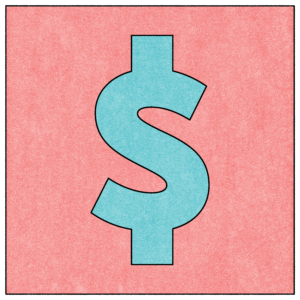 On pricing projects:
On pricing projects:
- It’s very hard to price a project if a client has given you almost no details about what they will need. I try to get the following details before providing a quote: deliverables, number of revisions, timeline/deadlines, usage, distribution, copyright. All of these things, and also the type of client or size of the company, will affect your rate.
- Your rates should align with your income goals and living expenses. This Freelance Rate Calculator can help you do the math.
- Time is not the only factor of illustration fees. You must also factor in usage and licensing.
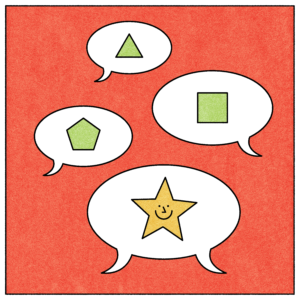 On negotiating:
On negotiating:
- You can always negotiate. ALWAYS. It’s more of a rule than an exception. You will never get what you don’t ask for, and sometimes clients aren’t sure what to charge illustrators and will a number at you that is way too low.
- Don’t be afraid that you will lose a job if you negotiate. Clients should be expecting negotiation and should respect your negotiation as long as it’s reasonable.
- Practice makes perfect. The first few times you ask for more money, your heart will race and you’ll have to force yourself to press send. After a while, the task will become much less emotional- especially if you are confident that you’ve done the research and know you are asking for a fair rate.
- It’s hard to negotiate if you have no idea what you are worth or what you should be charging. You can be more certain of what you are worth and need to be charging by using a freelance rate calculator or doing the math on your own. It takes some time, experience, and research to get familiar with what to charge for certain projects since there is no industry-wide price list.
- So, have a sense of what you should be getting per project/hour and ask for it. You are a professional and deserve to be paid accordingly. Repeat after me: you are not a charity!
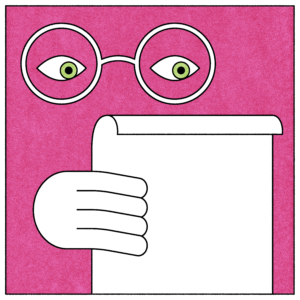 On contracts:
On contracts:
- Always have one, no matter how big or small the job is! You can find illustration contract templates online.
- Be aware of work-for-hire clauses. Work-for-hire means that you are giving away the copyright to your work to the company commissioning you. Giving away the copyright to your work means you should charge more. Alternatively, you can try to negotiate out of work-for-hire and propose a different type of license instead.
- Understand the difference between exclusive and nonexclusive licenses.
 On finances:
On finances:
- Get a business checking account. Taxes will be much easier if you have all of your business income and spending in one place. You can also connect this account to accounting software to streamline the whole process.
- Expect to be paid anywhere from 1 week – 3 months after submitting an invoice.
- Keep a spreadsheet (or use accounting software) to keep track of income and payment statuses.
- Take some time to learn about investing, saving money, Roth IRA’s, high yield savings accounts, and rewards credit cards if you haven’t already. You’ll be glad you did!
On taxes (in the US):
- Get a TIN (Tax Identification Number). This one is very important so that you aren’t emailing out your social security number to all of your clients on W9 forms. You can get one easily through the IRS website, and it’s free.
- You have to pay quarterly estimated taxes as a self-employed person. Deadlines are every April, June, September, and January.
- Be familiar with common tax write-offs for freelance illustrators – such as supplies, home office square footage, and registration fees for industry events.
- Again, keep an organized spreadsheet of your income/jobs/expenses.
This article originally appeared on Allie’s blog.
This work is licensed under a Creative Commons Attribution-ShareAlike 4.0 International License.

